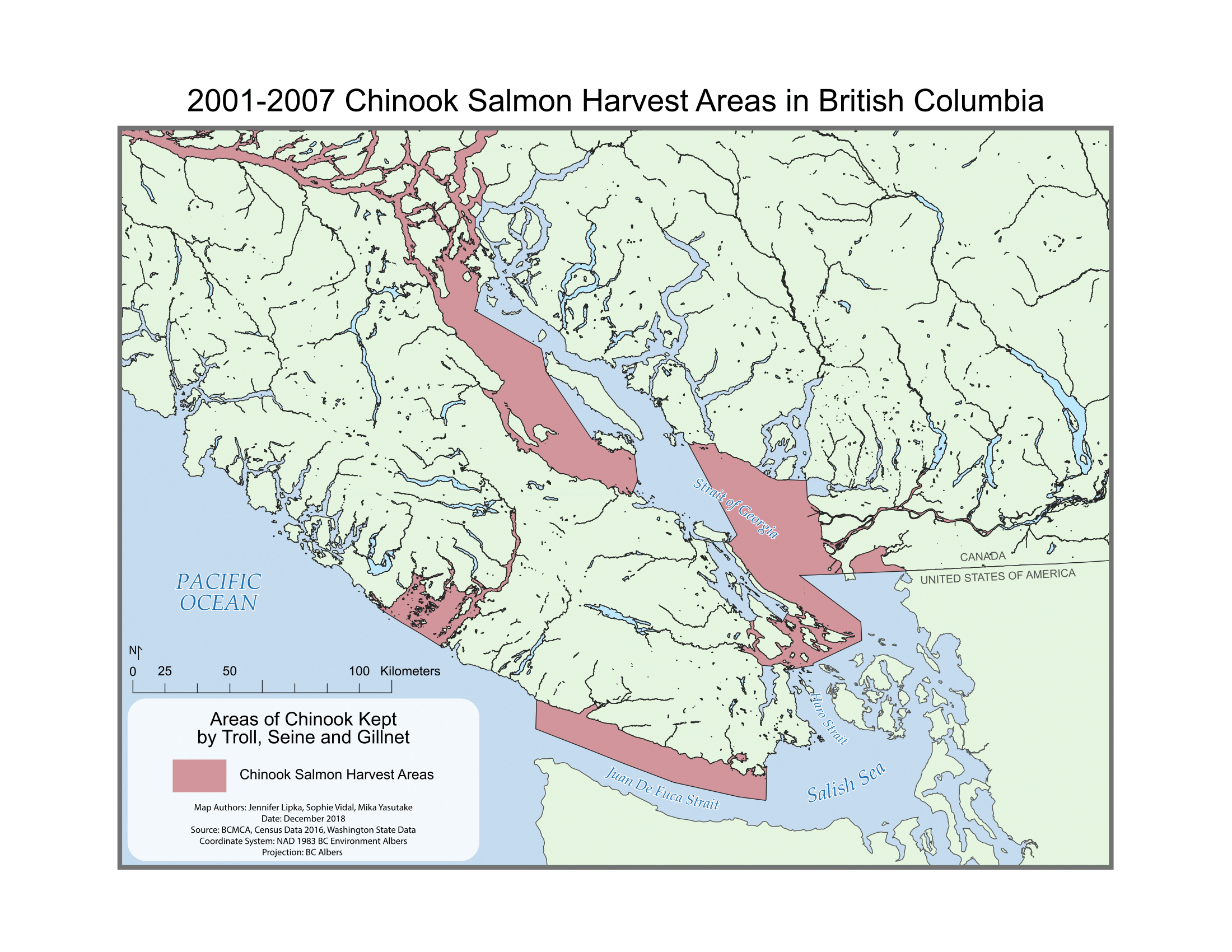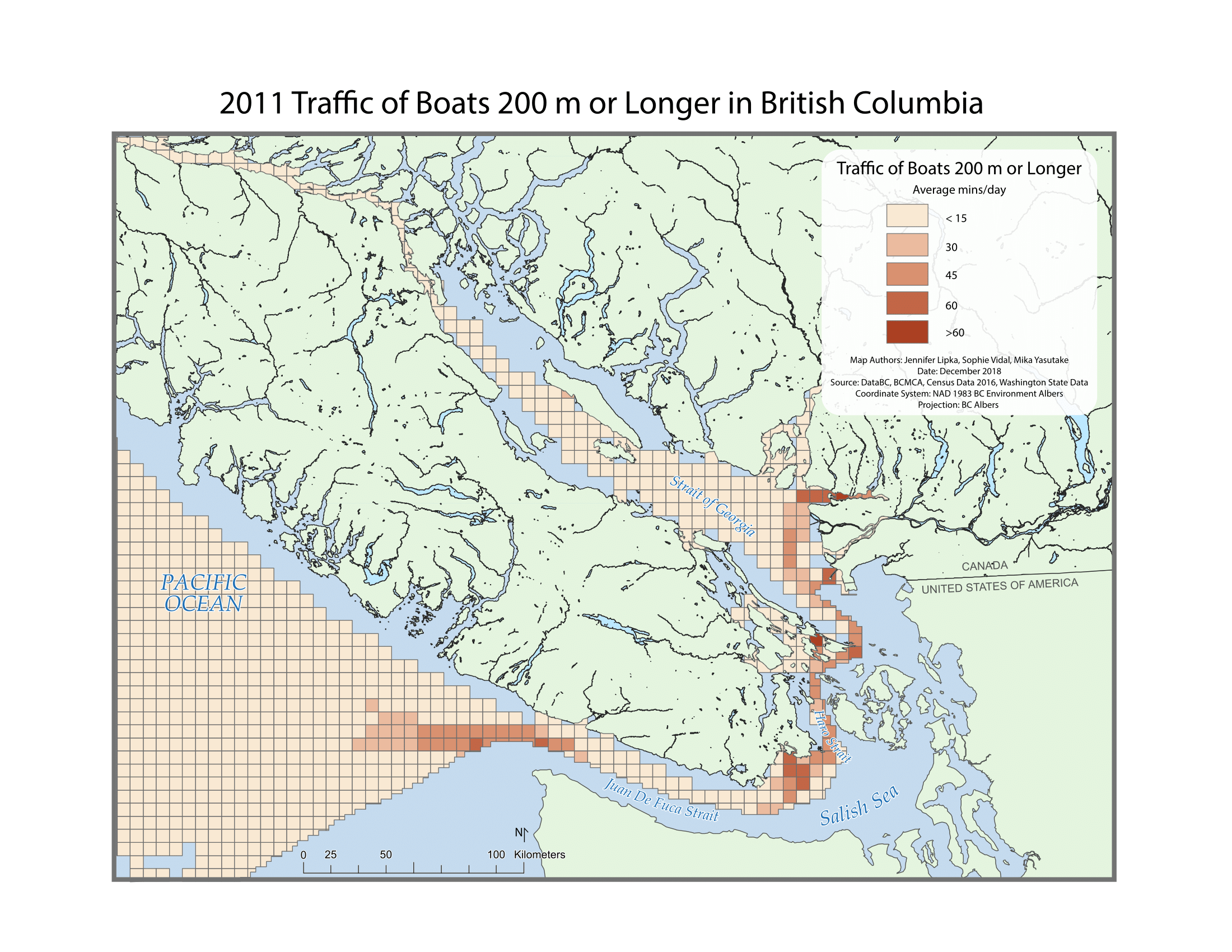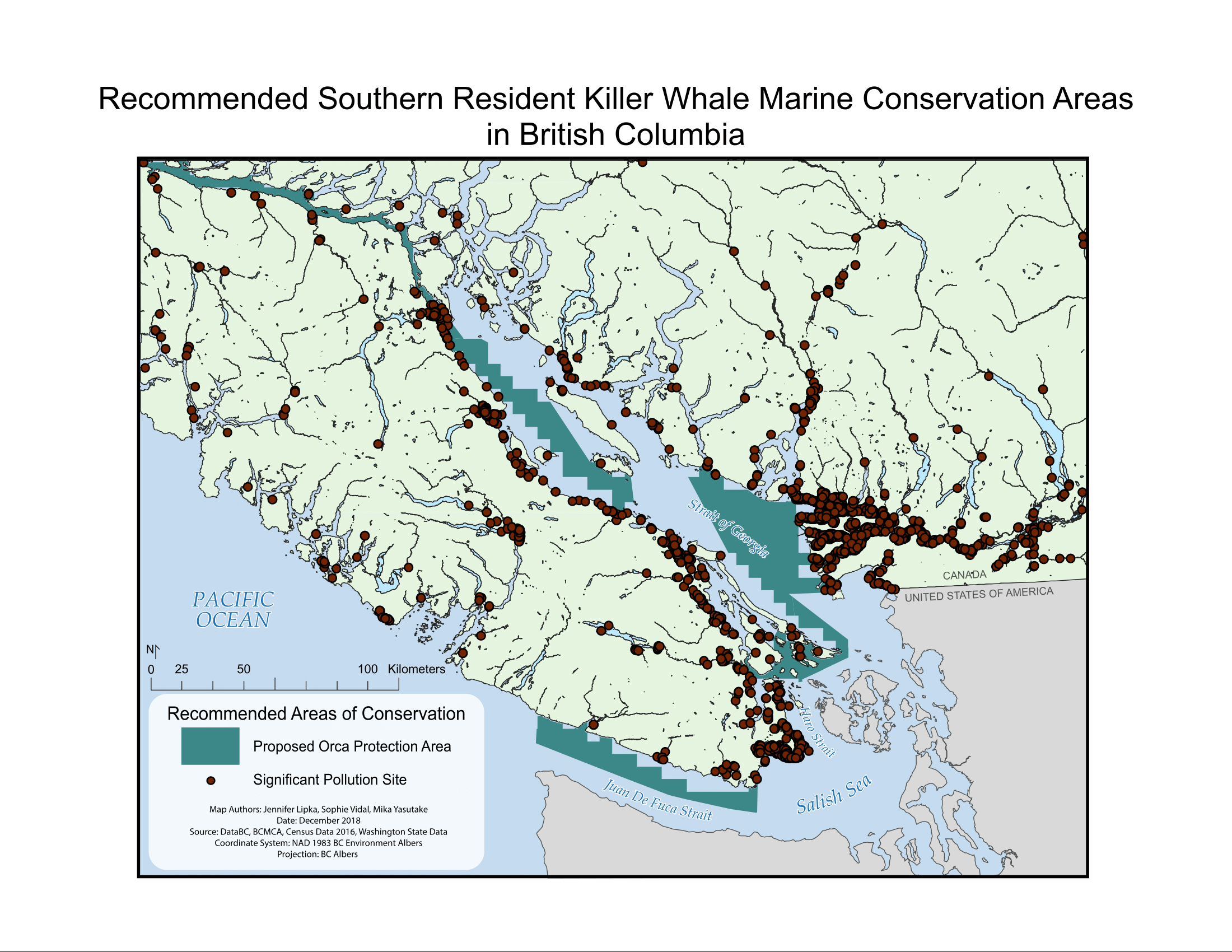About the Project
British Columbia’s coasts host a globally significant array of ecosystems and species whose sizes range from microscopic phytoplanktons to the world’s largest animal, the blue whale. Within this range lies Southern Resident Killer Whales (SRKW), also known as “orcas”, and it's main food source Chinook salmon, both of which not only play a significant role in supporting ecological health, but are also powerful cultural icons of BC. However, their populations are on a steep decline, with only 74 SRKW left alive. Research suggests that SRKW face three major threats of reduced prey availability, ocean pollutants and acoustic disturbances from boat traffic. However, urban expansions and proposed projects such as the Kinder Morgan Trans Mountain Pipeline further threatens BC’s marine wildlife, including the beloved SRKW. This project would increase the already immense tanker traffic by up to seven times its current load, consequently increasing the potential for oil spills and ecosystem disruption.
We conducted a spatial analysis based on data collected from DataBC and BC Marine Conservation Analysis (BCMCA) of Killer Whale distribution, Chinook salmon commercial catches, and tanker traffic, as well as contaminated properties, to understand the extent of these threats and possible conservation strategies. The data has been mined, parsed, filtered and manipulated to identify critical disturbance areas of SRKW based on fisheries catch values of Chinook salmon, as well as higher tanker traffic areas. Our project is aimed at the government and special interest groups, such as environmental non-profit organizations, for visual data representation and to augment policy and decision-makers through the proposal of several conservation strategies. The purpose of our project is to encourage SRKW population rehabilitation, while demonstrating the impacts that tanker traffic, pollution, and commercial fisheries have on the precious wildlife of our beautiful coasts.
The Extent of Key Threats on SRKW Distribution Areas


The above map displays the harvest areas of SRKW's main food source, the Chinook salmon, within the Salish Sea. We conducted a spatial analysis to identify Chinook Salmon harvest hotspots within SRKW distribution areas, to find that commercial fishing activities are conducted in 52.5% of critical SRKW distribution areas.


This map was created to showcase the density and expanse of vessel traffic within the Salish Sea and to give a taste as to the extensive geographic range of disturbances that this may cause. It shows how most ships funnel through the Strait of Georgia, Haro Strait and Juan de Fuca Strait, where at least one hour of tanker traffic is experienced everyday of the year within those areas. Furthermore, we conducted a spatial analysis where out of the estimated distribution of SRKW within the Salish Sea, we found that 48.3% was occupied by large vessel traffic for at least an average of 15 mins per day.


Due to the lack of publicly available marine pollution datafiles, we extrapolated from terrestrial pollution datasets and deemed contamination sites within 1km of water features such as coasts, rivers, and lakes, to be critical pollution sites. The above map highlights the immense amount of critical pollution sites (i.e., 3,276), especially along the Fraser River, east coast of Vancouver Island and within the Lower Mainland.
Implications of Key Threats and Conservation Strategies
From our analyses, we found that there are significant geographical disruptions caused by SRKW's threats. Thus, we have come up with the following conservation strategies within the Salish Seas:
- Ban commercial Chinook salmon harvests to rehabilitate both salmon and orca populations
- Lower speed limits for vessels
- Redress current waste management systems
- Incorporate water feature proximities and pollution caps to urban planning strategies
- Create marine protected areas for orcas
Project Management
Our team excelled our progress by harnessing our respective skills. We delineated tasks evenly based on our strengths and capabilities, allowing us to fuel the potential of our project to reach further and render a product that was outside of the expected box.
Key Learning Outcomes
From conducting our analyses, I personally encountered several key learning outcomes, most notably surrounding data collection, error and uncertainty, as well as data ethics. Tremendous difficulty was experienced when trying to acquire robust and reliable data. It was frustrating to see the data we wanted existing in other forms such as infographics and charts, but not in the format that was needed. For example, multiple non-profit organizations have more recently published maps of SRKW distributions, but not in formats that we could work with. Similarly, we could see academic journals working with marine pollution data for our project area, while not being able to find datasets for it. As a result, our analysis has been based on largely outdated data, having ramifications on the error and uncertainty of our analyses and thus, our recommendations.
If you'd like to know more, a full copy of our report can be accessed from the link below!
Anthropogenic Impacts on Southern Resident Killer Whales: Implications for Conservation Strategies

